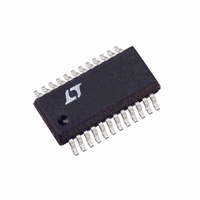LTC1702IGN#TR Linear Technology, LTC1702IGN#TR Datasheet - Page 8

LTC1702IGN#TR
Manufacturer Part Number
LTC1702IGN#TR
Description
IC REG SW DUAL SYNC 2PH 24SSOP
Manufacturer
Linear Technology
Series
PolyPhase®r
Type
Step-Down (Buck)r
Datasheet
1.LTC1702CGN.pdf
(36 pages)
Specifications of LTC1702IGN#TR
Internal Switch(s)
No
Synchronous Rectifier
Yes
Number Of Outputs
2
Current - Output
1A, 25A
Frequency - Switching
550kHz
Voltage - Input
3 ~ 7 V
Operating Temperature
-40°C ~ 85°C
Mounting Type
Surface Mount
Package / Case
24-SSOP
Lead Free Status / RoHS Status
Contains lead / RoHS non-compliant
Voltage - Output
-
Power - Output
-
Available stocks
Company
Part Number
Manufacturer
Quantity
Price
APPLICATIONS
2-Step Conversion
“2-step” architectures use a primary regulator to convert
the input power source (batteries or AC line voltage) to an
intermediate supply voltage, often 5V. This intermediate
voltage is then converted to the low voltage, high current
supplies required by the system using a secondary regu-
lator— the LTC1702. 2-step conversion eliminates the
need for a single converter that converts a high input
voltage to a very low output voltage, often an awkward
design challenge. It also fits naturally into systems that
continue to use the 5V supply to power portions of their
circuitry, or have excess 5V capacity available as newer
circuit designs shift the current load to lower voltage
supplies.
Each regulator in a typical 2-step system maintains a
relatively low step-down ratio (5:1 or less), running at high
efficiency while maintaining a reasonable duty cycle. In
contrast, a regulator taking a single step from a high input
voltage to a 1.xV or 2.xV output must run at a very narrow
duty cycle, mandating trade-offs in external component
values and compromising efficiency and transient
response. The efficiency loss can exceed that of using a
2-step solution (see the 2-Step Efficiency Calculation
section and Figure 10). Further complicating the calcula-
tion is the fact that many systems draw a significant
fraction of their total power off the intermediate 5V supply,
bypassing the low voltage supply. 2-step solutions using
the LTC1702 usually match or exceed the total system
efficiency of single-step solutions, and provide the addi-
tional benefits of improved transient response, reduced
PCB area and simplified power trace routing.
2-step regulation can buy advantages in thermal manage-
ment as well. Power dissipation in the LTC1702 portion of
a 2-step circuit is lower than it would be in a typical 1-step
converter, even in cases where the 1-step converter has
higher total efficiency than the 2-step system. In a typical
microprocessor core supply regulator, for example, the
regulator is usually located right next to the CPU. In a
1-step design, all of the power dissipated by the core
regulator is right there next to the hot CPU, aggravating
thermal management. In a 2-step LTC1702 design, a
significant percentage of the power lost in the core
LTC1702
8
U
INFORMATION
U
W
U
regulation system happens in the 5V supply, which is
usually located away from the CPU. The power lost to heat
in the LTC1702 section of the system is relatively low,
minimizing the added heat near the CPU.
See the Optimizing Performance section for a detailed
explanation of how to calculate system efficiency.
2-Phase Operation
The LTC1702 dual switching regulator controller also
features the considerable benefits of 2-phase operation.
Notebook computers, hand-held terminals and automo-
tive electronics all benefit from the lower input filtering
requirement, reduced electromagnetic interference (EMI)
and increased efficiency associated with 2-phase
operation.
Why the need for 2-phase operation? Up until the LTC1702,
constant-frequency dual switching regulators operated
both channels in phase (i.e., single-phase operation). This
means that both topside MOSFETs turned on at the same
time, causing current pulses of up to twice the amplitude
of those for one regulator to be drawn from the input
capacitor. These large amplitude current pulses increased
the total RMS current flowing from the input capacitor,
requiring the use of more expensive input capacitors and
increasing both EMI and losses in the input capacitor and
input power supply.
With 2-phase operation, the two channels of the LTC1702
are operated 180 degrees out of phase. This effectively
interleaves the current pulses coming from the switches,
greatly reducing the overlap time where they add together.
The result is a significant reduction in total RMS input
current, which in turn allows less expensive input capaci-
tors to be used, reduces shielding requirements for EMI
and improves real world operating efficiency.
Figure 7 shows example waveforms for a single switching
regulator channel versus a 2-phase LTC1702 system with
both sides switching. A single-phase dual regulator with
both sides operating would exhibit double the single side
numbers. In this example, 2-phase operation reduced the
RMS input current from 9.3A
4.8A
RMS
. While this is an impressive reduction in itself,
RMS
(2 × 4.66A
RMS
) to
1702fa













